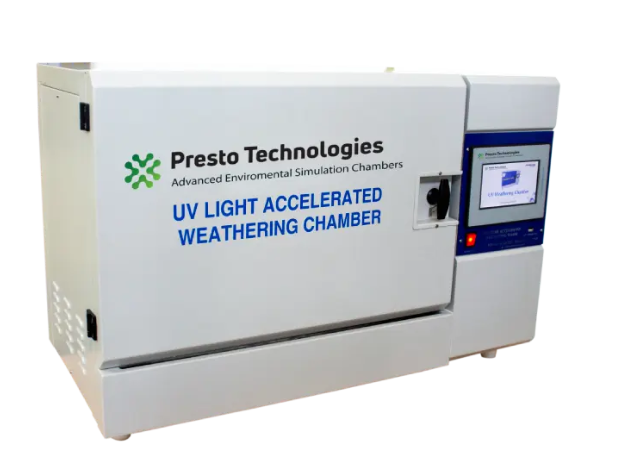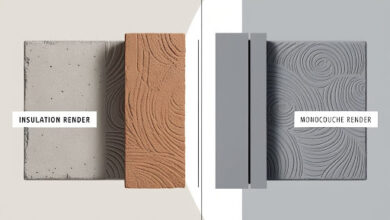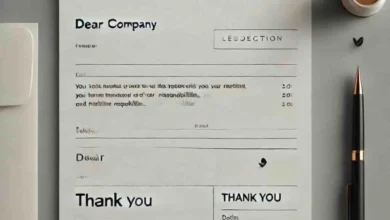Why UV Weathering Chamber Matter for Durability

When it comes to developing products that can endure the harsh realities of the outside world, manufacturers turn to specialized testing equipment. One such indispensable tool is the UV weathering test chamber. Designed to simulate the damaging effects of ultraviolet (UV) light, temperature fluctuations, and moisture exposure, the chamber plays a crucial role in ensuring the longevity and durability of materials. The environmental test chamber is another broad category of testing equipment that includes a chamber for UV, temperature, humidity, and other weather-related tests, offering a comprehensive solution for simulating environmental conditions.
In this article, we will explore the importance of these testing devices, their application across various industries, and how they help improve product quality and reliability.
The Importance of Simulating Real-World Environmental Conditions
Every product, whether it’s a car part, a plastic component, or a piece of outdoor furniture, faces the risk of degradation due to environmental factors. UV radiation from the sun, temperature extremes, and humidity can cause a significant decline in the material’s integrity over time. Without proper testing, manufacturers would have no way of predicting how a product will perform under these conditions.
The UV weathering test chamber helps simulate prolonged exposure to sunlight, allowing manufacturers to assess how materials will degrade, discolor, or lose structural integrity. By accelerating the aging process through artificial exposure to UV rays, heat, and moisture, manufacturers can gather data on a product’s lifespan.
Similarly, an environmental test chamber goes beyond UV light to test materials in a variety of simulated environmental conditions. Whether it’s salt fog, temperature cycling, or humidity variations, thai chambers replicate a range of weather conditions that a product might encounter throughout its life cycle.
How UV Weathering Test Chamber Work
A UV weathering test chamber uses specially designed lights that mimic the sun’s UV rays. By exposing materials to these lights in a controlled setting, the chamber can simulate the degradation process caused by the sun’s radiation. Here are a few ways these chamber function:
- UV Light Simulation: The chamber uses high-intensity lamps to recreate UV radiation similar to what products might experience outdoors, even during cloudy days. The UV light accelerates chemical reactions within materials, causing fading, cracking, or deterioration.
- Temperature and Humidity Control: Many test chambers also allow for controlled temperature and humidity conditions to simulate real-world outdoor environments. Products undergo testing under conditions that might combine UV radiation with high or low temperatures and varying humidity levels.
- Monitoring and Analysis: During the test, manufacturers can monitor how products are reacting to the exposure. The results help in evaluating color fading, structural strength, and overall material integrity.
The Broad Range of Applications for UV Weathering Test chamber
A UV weathering test chamber is vital for a range of industries, ensuring that products meet performance and safety standards. Below are some key applications:
- Automotive Industry: From exterior car parts to interior components like dashboards, manufacturers use a UV test chamber to simulate sun exposure and assess how materials like plastics, fabrics, and paints will hold up against the harsh rays of the sun. This ensures that car parts maintain their appearance and functionality over time.
- Electronics: Electronic devices exposed to sunlight, such as mobile phones or outdoor lighting systems, are tested to ensure that their casing materials won’t degrade or lose strength due to UV exposure. These tests help in making products more durable and safe for extended outdoor use.
- Consumer Goods: Products like outdoor furniture, textiles, and packaging materials undergo UV weathering tests to guarantee they will stand up to outdoor conditions without fading or deteriorating. Manufacturers of garden chairs, tarps, and other outdoor products rely on this testing to ensure longevity.
- Coatings and Paints: UV weathering tests help in determining how exterior paints, coatings, and sealants will perform under UV exposure. This is essential for industries that rely on color fastness and long-lasting finishes, such as in building construction, signage, and vehicle production.
The Synergy of UV Weathering Test chamber and Environmental Test chamber
While a UV weathering test chamber focuses on simulating the sun’s rays and associated weathering, an environmental test chamber offers a broader suite of testing capabilities. Combining both types of chamber provides a comprehensive testing solution for manufacturers who need to assess how products react to a variety of environmental factors.
- Temperature Cycling: Temperature cycling is a common test used in an environmental chamber. By simulating extreme temperature shifts, manufacturers can evaluate how materials react to expansion and contraction, ensuring no structural issues develop.
- Humidity Testing: High levels of humidity can cause materials like metals to rust, plastics to weaken, and paints to peel. Environmental test chambers simulate various humidity levels to assess a product’s resistance to moisture damage.
- Salt Fog Testing: Coastal regions and marine environments expose products to saltwater and salt fog, which can significantly reduce the lifespan of materials. Environmental chambers can simulate these corrosive conditions, ensuring that products meet the required standards for outdoor use.
Key Benefits of Using UV Weathering and Environmental Test chamber
The use of UV weathering test chamber and environmental test chamber provides manufacturers with numerous benefits:
- Accelerated Testing: By replicating years of environmental exposure in a matter of weeks or months, manufacturers can quickly evaluate the durability of materials. This speeds up the development process and reduces the time to market.
- Cost Savings: Testing in a controlled chamber helps identify weak spots early in the design process, preventing costly product recalls or revisions. By ensuring materials are durable, companies can avoid the expense of replacing defective products.
- Regulatory Compliance: In many industries, products must pass specific environmental tests to comply with safety standards. UV and environmental chambers help manufacturers ensure that their products meet these requirements, avoiding legal issues and fines.
- Quality Assurance: Regular testing ensures that a company’s products maintain their high standards and perform well over time. This leads to improved customer satisfaction, as consumers can trust that the products they buy are built to last.
Why Manufacturers Should Invest in These Test chamber
The benefits of UV weathering and environmental testing go beyond simply ensuring that products will perform well in their intended environments. These tests provide insights into improving materials, designs, and production processes, ultimately leading to superior products that are more reliable and sustainable.
Investing in an advanced test chamber not only supports product development but also builds a brand reputation for quality. Customers are more likely to trust products that have undergone rigorous testing, particularly when they know that these products can withstand harsh environmental conditions.
Conclusion: The Future of Material Testing
As technology continues to evolve, so do the tools used to test materials. UV weathering test chamber and environmental test chamber have become essential for industries looking to ensure the longevity and reliability of their products. Whether it’s ensuring the durability of automotive parts, electronics, or outdoor gear, these testing tools allow manufacturers to meet high standards while mitigating the risk of product failure in the field.
By investing in these testing methods, companies can innovate with confidence, knowing that their products are well-prepared to face the challenges of the real world.





